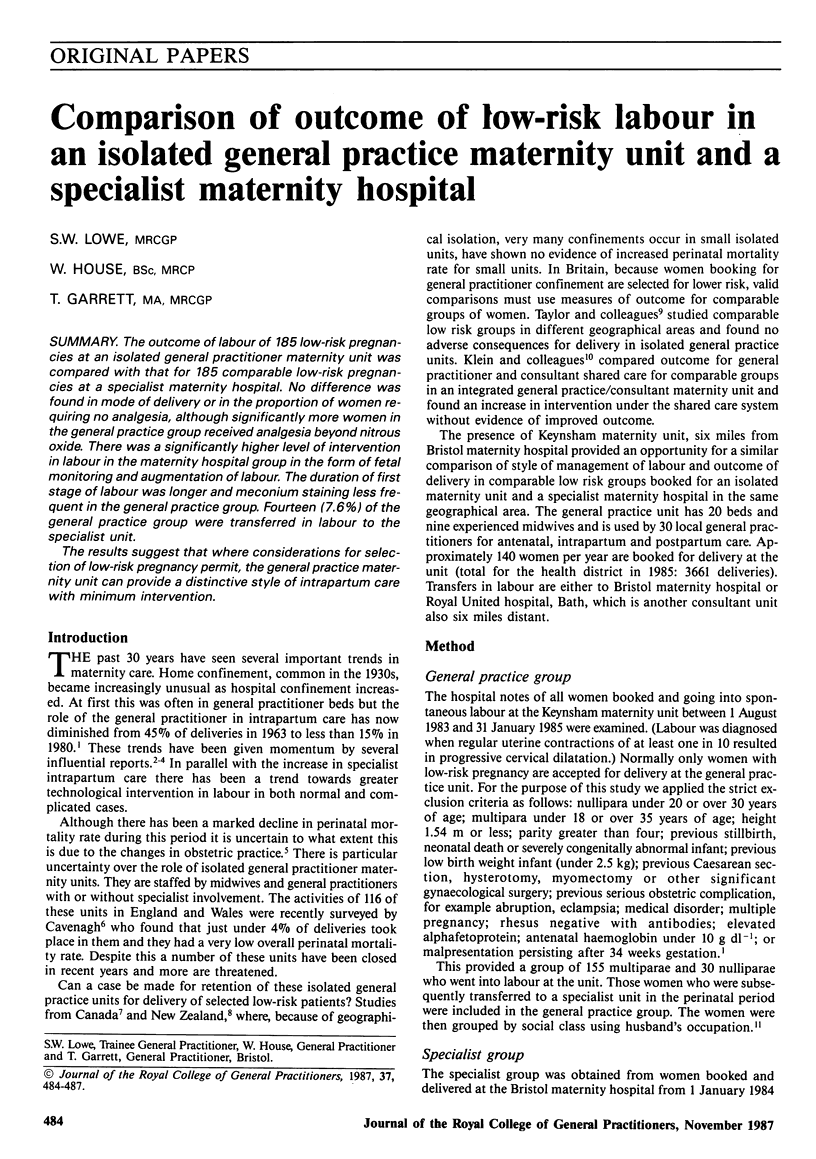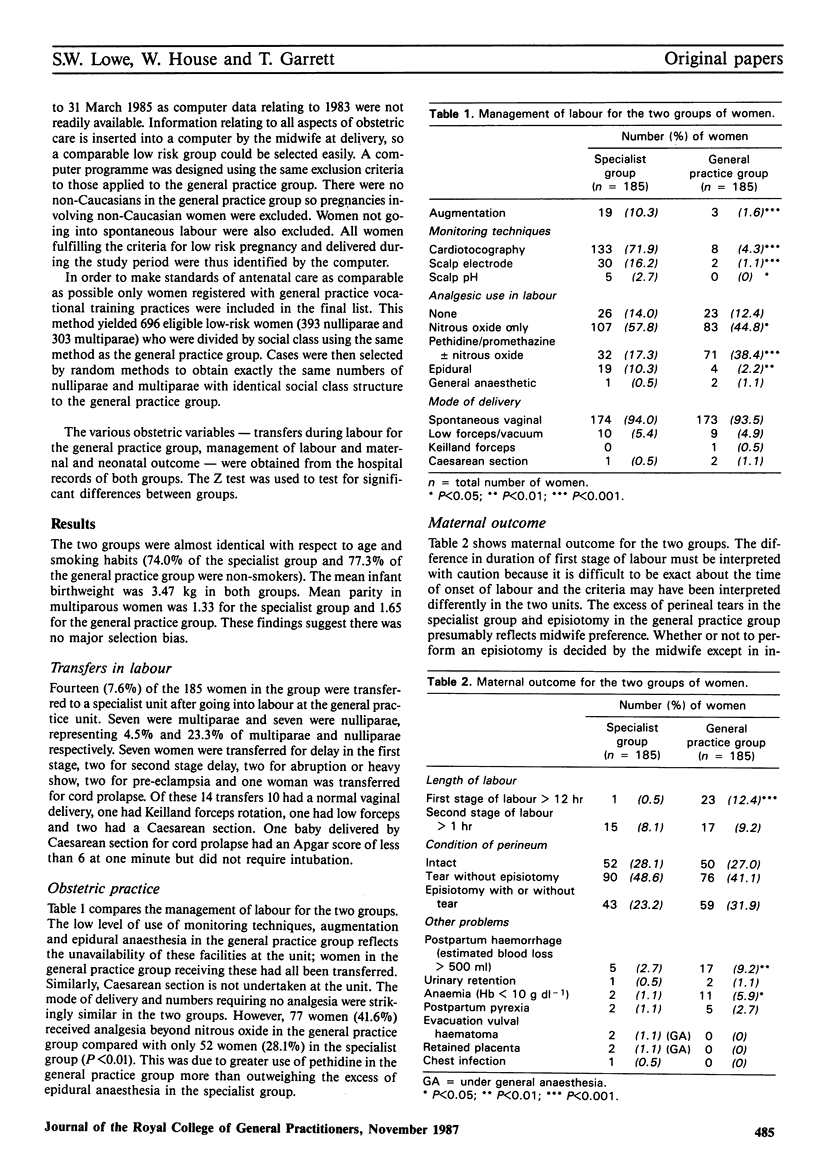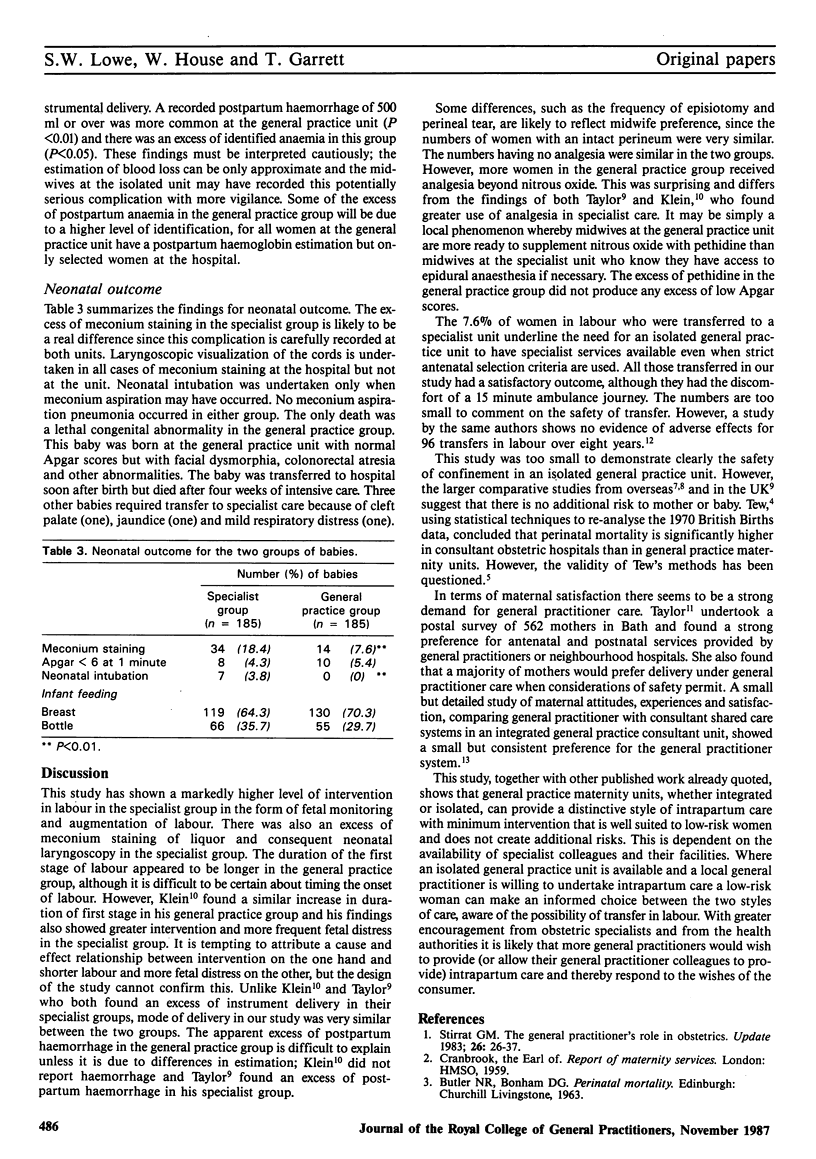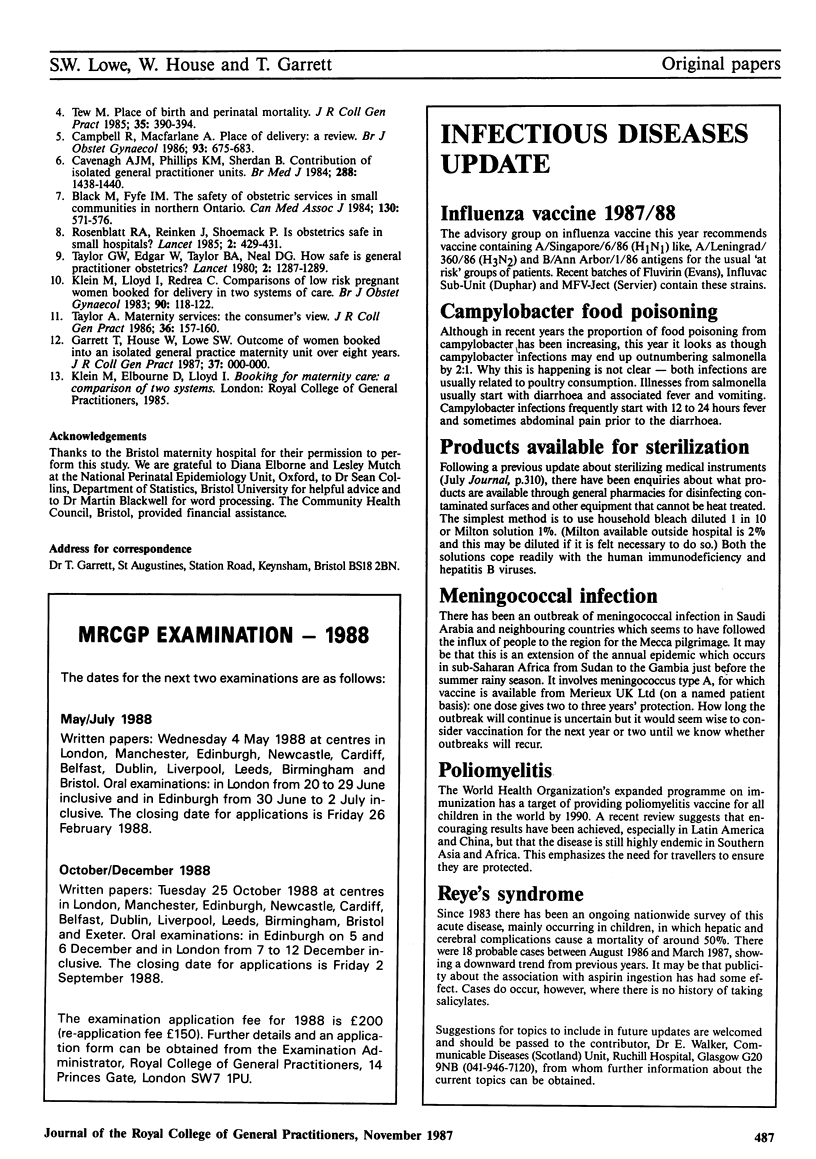Abstract
The outcome of labour of 185 low-risk pregnancies at an isolated general practitioner maternity unit was compared with that for 185 comparable low-risk pregnancies at a specialist maternity hospital. No difference was found in mode of delivery or in the proportion of women requiring no analgesia, although significantly more women in the general practice group received analgesia beyond nitrous oxide. There was a significantly higher level of intervention in labour in the maternity hospital group in the form of fetal monitoring and augmentation of labour. The duration of first stage of labour was longer and meconium staining less frequent in the general practice group. Fourteen (7.6%) of the general practice group were transferred in labour to the specialist unit.
The results suggest that where considerations for selection of low-risk pregnancy permit, the general practice maternity unit can provide a distinctive style of intrapartum care with minimum intervention.
Full text
PDF



Selected References
These references are in PubMed. This may not be the complete list of references from this article.
- Black D. P., Fyfe I. M. The safety of obstetric services in small communities in northern Ontario. Can Med Assoc J. 1984 Mar 1;130(5):571–576. [PMC free article] [PubMed] [Google Scholar]
- Campbell R., MacFarlane A. Place of delivery: a review. Br J Obstet Gynaecol. 1986 Jul;93(7):675–683. [PubMed] [Google Scholar]
- Cavenagh A. J., Phillips K. M., Sheridan B., Williams E. M. Contribution of isolated general practitioner maternity units. Br Med J (Clin Res Ed) 1984 May 12;288(6428):1438–1440. doi: 10.1136/bmj.288.6428.1438. [DOI] [PMC free article] [PubMed] [Google Scholar]
- Klein M., Lloyd I., Redman C., Bull M., Turnbull A. C. A comparison of low-risk pregnant women booked for delivery in two systems of care: shared-care (consultant) and integrated general practice unit. I. Obstetrical procedures and neonatal outcome. Br J Obstet Gynaecol. 1983 Feb;90(2):118–122. doi: 10.1111/j.1471-0528.1983.tb08894.x. [DOI] [PubMed] [Google Scholar]
- Rosenblatt R. A., Reinken J., Shoemack P. Is obstetrics safe in small hospitals? Evidence from New Zealand's regionalised perinatal system. Lancet. 1985 Aug 24;2(8452):429–432. doi: 10.1016/s0140-6736(85)92747-3. [DOI] [PubMed] [Google Scholar]
- Taylor A. Maternity services: the consumer's view. J R Coll Gen Pract. 1986 Apr;36(285):157–160. [PMC free article] [PubMed] [Google Scholar]
- Taylor G. W., Edgar W., Taylor B. A., Neal D. G. How safe is general practitioner obstetrics? Lancet. 1980 Dec 13;2(8207):1287–1289. doi: 10.1016/s0140-6736(80)92348-x. [DOI] [PubMed] [Google Scholar]
- Tew M. Place of birth and perinatal mortality. J R Coll Gen Pract. 1985 Aug;35(277):390–394. [PMC free article] [PubMed] [Google Scholar]


